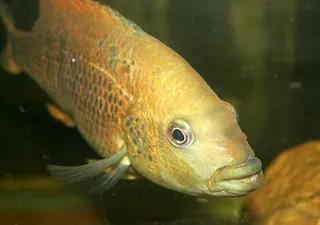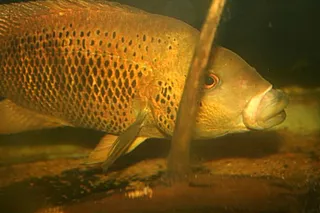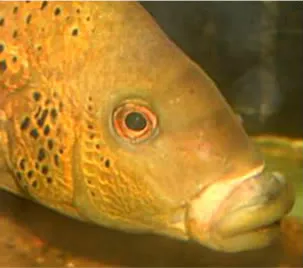- Have you tested your water?
- Yes
- If yes, what is your ammonia?
- 0
- If yes, what is your nitrite?
- 0
- If yes, what is your nitrate?
- 0.2
- If I did not test my water...
- ...I recognize that I will likely be asked to do a test, and that water tests are critical for solving freshwater health problems.
- Do you do water changes?
- Yes
- What percentage of water do you change?
- 51-60%
- How frequently do you change your water?
- Every two weeks
- If I do not change my water...
- ...I recognize that I will likely be recommended to do a water change, and water changes are critical for preventing future freshwater health problems.
Here's the gist,
I recently went to Absolutely Fish and saw one of their tanks had jaguar cichlids with columnaris (obvious characteristic duck lips). It was a bit concerning, considering the high reputation of that store.
Nevertheless, I looked at other cichlids in separate tanks at the store and none had duck lips.
As such, I decided to purchase 2 African cichlids from a tank located decently far away from the tank with columnaris to ensure that the tank is too far away to be cross-contaminated with columnaris.
The Absolutely Fish website writes that
"A meticulous record is keep of all filter and water changes for all tanks. All of the freshwater tanks have separate filters to allow us to use specific medications and to prevent the spread of disease. It also allows us to closely monitor the water conditions within each tank so we can cater to the very specific needs of freshwater fishes"
Therefore, I am assuming that they do what they say and hopefully won't cross-contaminate colunarmis into the tank that I bought my fish from.
However, I am still playing it safe and quarantining the new fish for extra time. The only question is, how long does it take for fish to exhibit visible signs of columnaris after getting infected and also how long is a reasonable time to quarantine those fish before I put them in the main tank?
I recently went to Absolutely Fish and saw one of their tanks had jaguar cichlids with columnaris (obvious characteristic duck lips). It was a bit concerning, considering the high reputation of that store.
Nevertheless, I looked at other cichlids in separate tanks at the store and none had duck lips.
As such, I decided to purchase 2 African cichlids from a tank located decently far away from the tank with columnaris to ensure that the tank is too far away to be cross-contaminated with columnaris.
The Absolutely Fish website writes that
"A meticulous record is keep of all filter and water changes for all tanks. All of the freshwater tanks have separate filters to allow us to use specific medications and to prevent the spread of disease. It also allows us to closely monitor the water conditions within each tank so we can cater to the very specific needs of freshwater fishes"
Therefore, I am assuming that they do what they say and hopefully won't cross-contaminate colunarmis into the tank that I bought my fish from.
However, I am still playing it safe and quarantining the new fish for extra time. The only question is, how long does it take for fish to exhibit visible signs of columnaris after getting infected and also how long is a reasonable time to quarantine those fish before I put them in the main tank?







